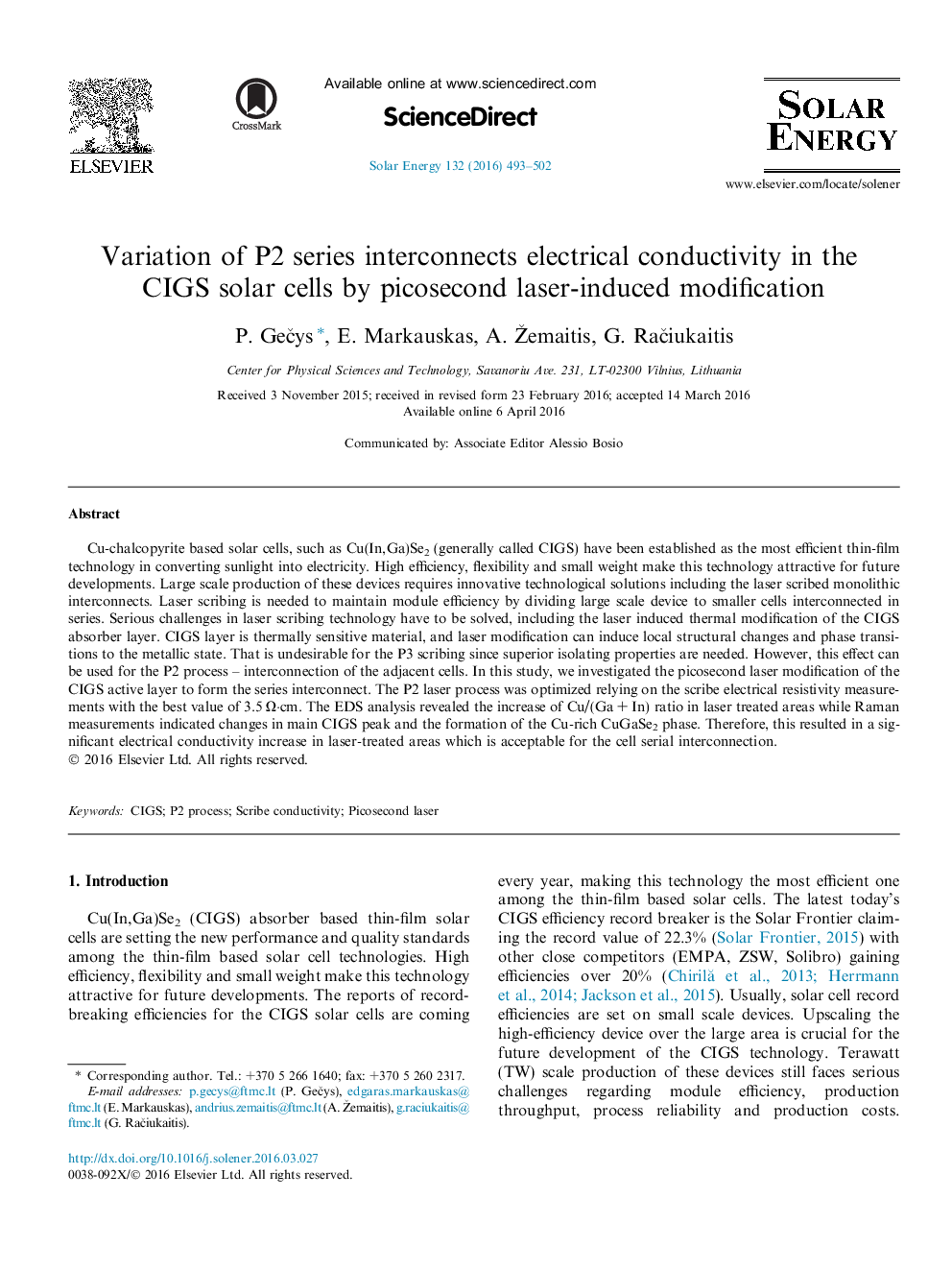| Article ID | Journal | Published Year | Pages | File Type |
|---|---|---|---|---|
| 1549420 | Solar Energy | 2016 | 10 Pages |
•CIGS thin-films were laser-modified (welded) using a picosecond laser pulses.•Scribe resistivity of 3.5 Ω·cm was obtained which is acceptable for the series interconnect formation.•The EDS analysis revealed the increase of Cu/(Ga + In) ratio in laser treated areas.•Raman measurements indicated the formation of the Cu-rich CuGaSe2 phase.•The picosecond laser welding process can be used for the CIGS cells interconnect formation.
Cu-chalcopyrite based solar cells, such as Cu(In,Ga)Se2 (generally called CIGS) have been established as the most efficient thin-film technology in converting sunlight into electricity. High efficiency, flexibility and small weight make this technology attractive for future developments. Large scale production of these devices requires innovative technological solutions including the laser scribed monolithic interconnects. Laser scribing is needed to maintain module efficiency by dividing large scale device to smaller cells interconnected in series. Serious challenges in laser scribing technology have to be solved, including the laser induced thermal modification of the CIGS absorber layer. CIGS layer is thermally sensitive material, and laser modification can induce local structural changes and phase transitions to the metallic state. That is undesirable for the P3 scribing since superior isolating properties are needed. However, this effect can be used for the P2 process – interconnection of the adjacent cells. In this study, we investigated the picosecond laser modification of the CIGS active layer to form the series interconnect. The P2 laser process was optimized relying on the scribe electrical resistivity measurements with the best value of 3.5 Ω·cm. The EDS analysis revealed the increase of Cu/(Ga + In) ratio in laser treated areas while Raman measurements indicated changes in main CIGS peak and the formation of the Cu-rich CuGaSe2 phase. Therefore, this resulted in a significant electrical conductivity increase in laser-treated areas which is acceptable for the cell serial interconnection.
